GMS Junior Field Trip December 2024
If you have any questions about field trips send email toGMS Field Trip
Marine Fossils and Geodes in Tennessee
Saturday, December 14, 2024
GMS (and Knoxville Gem & Mineral Society) field trips are always fun, but when there are three locations to visit during one trip, they are triple fun! We started our adventures with a cook-out the night before the trip at a local inn where practically the entire hotel was set aside just for us! We had a private patio with a grill and fire pit all to ourselves.
The following morning, we met at the first location where we looked briefly for fossilized coral. Members found nice specimens of Lithostrotionella, a Mississippian Period colonial coral. The distinctive hexagonal corallites were easy to spot, even in red clay, so it didn’t take long before everyone was happy.
Next, we went to another location to collect more Mississippian marine fossils, mostly crinoids. Crinoids are echinoderms, so their cousins include starfish and sea urchins. Some crinoids anchor themselves, while others swim freely. At the time of this writing, more than 5,000 species of extinct crinoids have been identified, while 650 living species are known. Often referred to as sea lilies or feather stars, crinoids are animals that look like plants. Even the terminology used to describe their anatomy is similar to plant terminology. Many of the species that lived in this area had long “stalks” called “stems” that were topped with a “calyx”, terms you might use for a flower. We were finding mostly fossilized pieces of stems, though members found a few calyxes too. Other finds included bryozoans, brachiopods, and encrinite, i.e., conglomerate rock composed of crinoid fossils.
After a quick lunch, we continued on to the third and final location for the day. There, we found an abundance of geodes, from walnut-sized to some as large as coconuts. Charles and I had a great time collecting small geodes that were already broken open. Charles always cleans them until they sparkle, perfect for grab bags. Other members found larger geodes and cracked them open on the spot, or saved them to open later. I saw some beautiful specimens that will be even more spectacular after they are cleaned. After the trip, attendees received links to Charles’ article about cleaning quartz (here) and a link to presentation he did on the same topic (here).
It was so easy to find geodes that everyone got their fill early enough to return to the inn for another cook-out! We enjoyed grilled hot dogs with chili, cheese, and coleslaw; baked beans; home-made goulash; potato chips; hot apple cider; cosmic brownies; and, of course, we toasted marshmallows on the glowing embers. As the day wound down, we sat around a fire pit enjoying some rockhound camaraderie, and watched as our marshmallow sticks were reduced to ashes.
Many thanks to property owners who allowed us to collect. Thank you to members who brought food for our cook-outs and shared their time with us. Thank you to the owner of the inn where we stayed. The rooms are beautifully decorated and comfortable, plus the patio was fully stocked for us. And of course, thank you to Charles Carter and Daniel Miller (Knoxville Gem & Mineral Society field trip chair) for arranging this multi-location trip!
Lori Carter on behalf of Charles Carter
e-mail:
Coral
Photos by Lori Carter
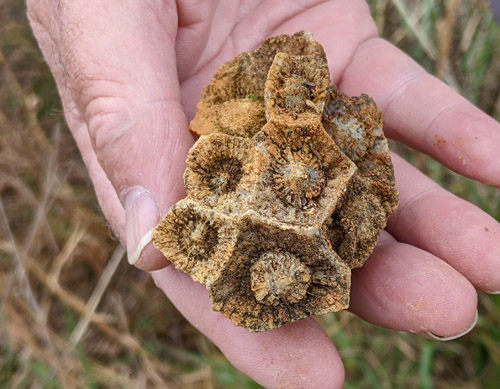
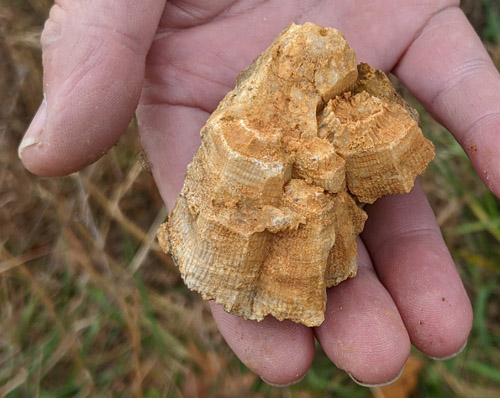
Classic example of Lithostrotionella fossil coral
Photo by Lori Carter
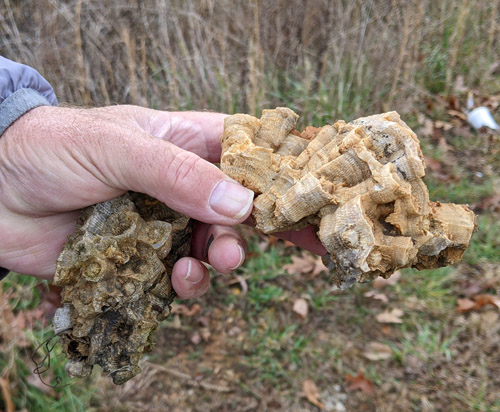
Another nice coral specimen
Photos by Lori Carter
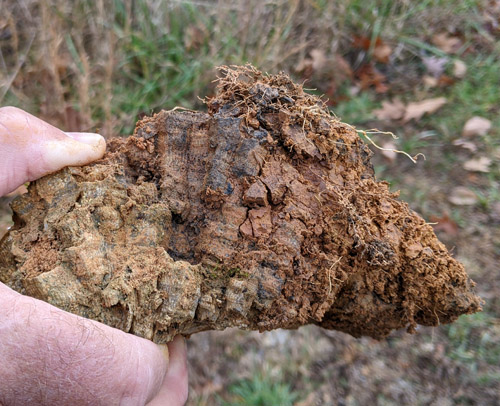
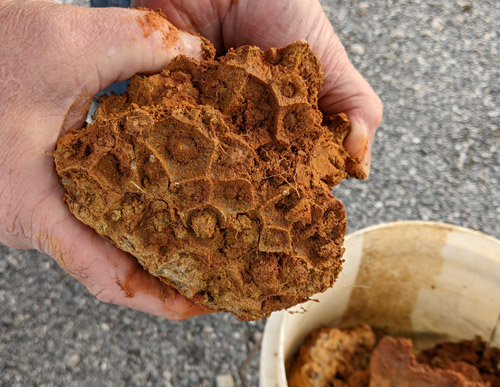
Once the red clay is gone, these will be gorgeous specimens
Crinoids
Photo by Lori Carter
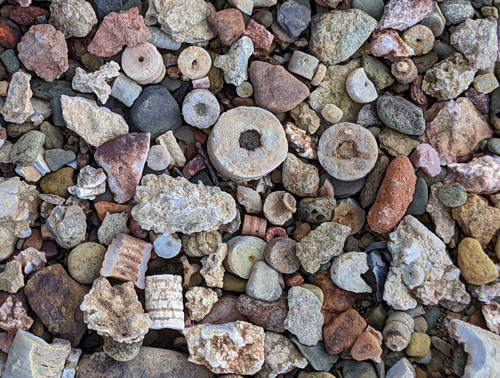
Crinoid stems everywhere!
Photo by Lori Carter
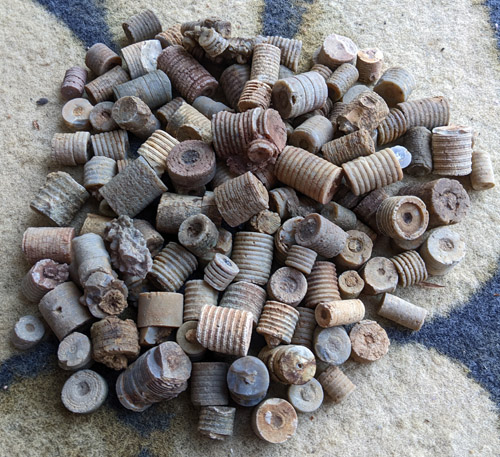
These crinoid stems were collected to be put into grab bags
Photo by Lori Carter
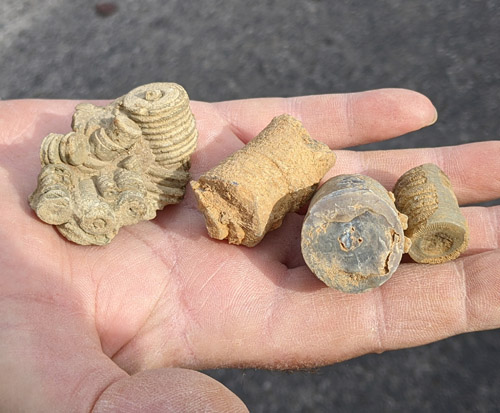
Excellent examples of crinoid stems
Photos by Lori Carter
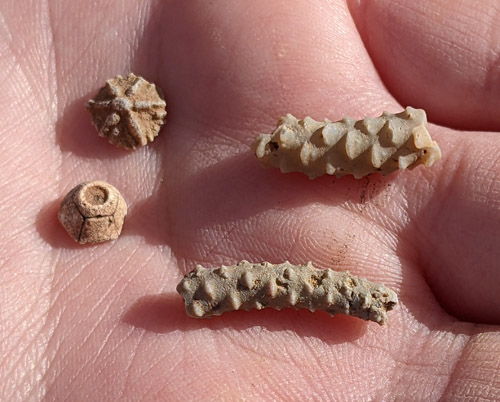
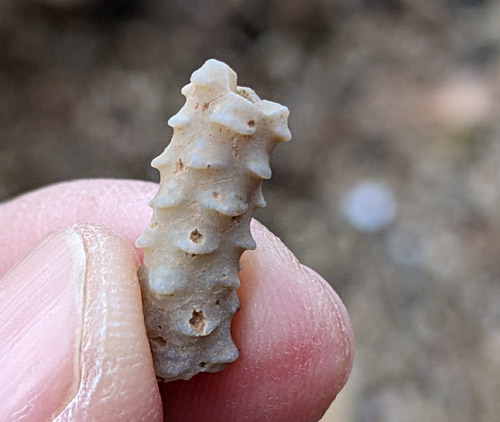
The small bits are calyx pieces
and the spiky bits were either close to a calyx or are stems of a particular species
Photo1 by Lori Carter
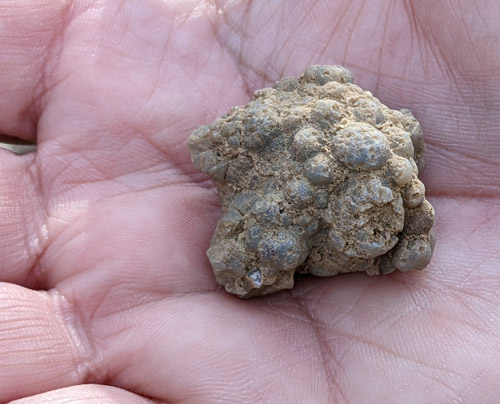
Speaking of calyxes, here is a nice calyx...
Photo1 by Lori Carter
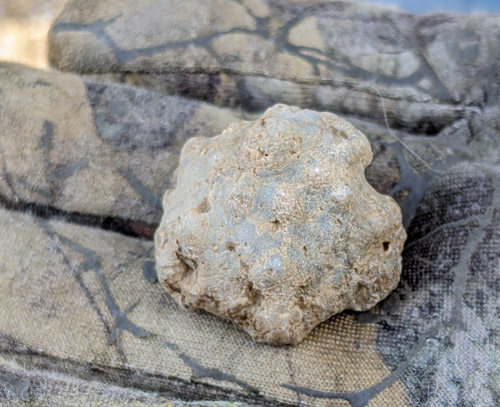

...and a small calyx...
Photos by Lori Carter
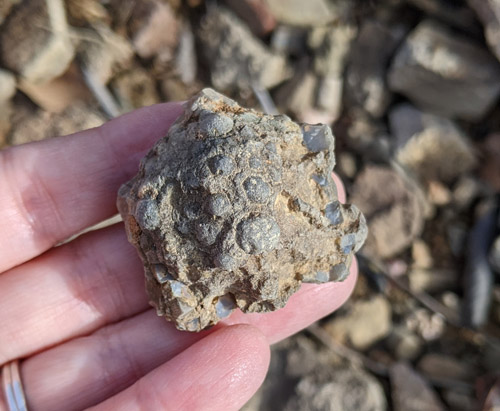
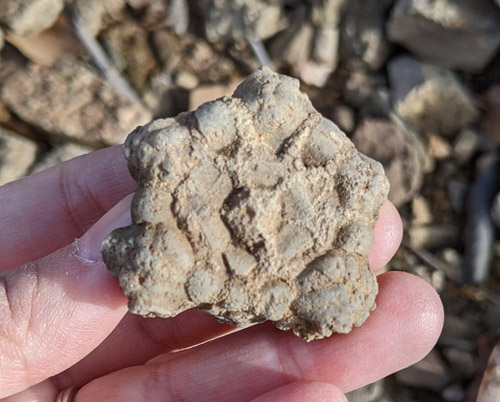
...and another calyx
Photos by Lori Carter
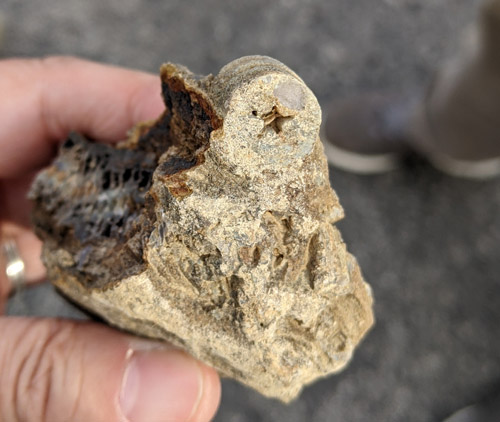
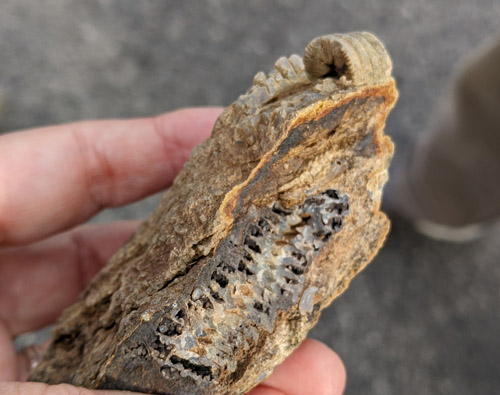
This piece is a conglomerate of stems.
One has a star-shaped center and the other is a cross-section.
Photo by Lori Carter
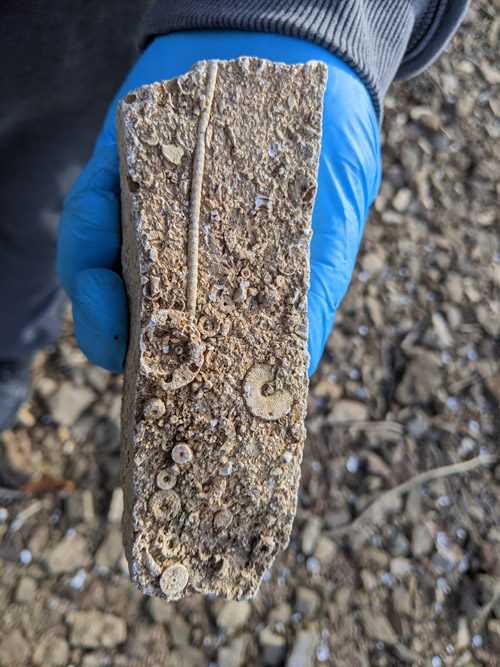
This conglomerate has a long, thin stem, possibly from a blastoid
Photo by Lori Carter

Beautiful piece of encrinite
Photos by Lori Carter
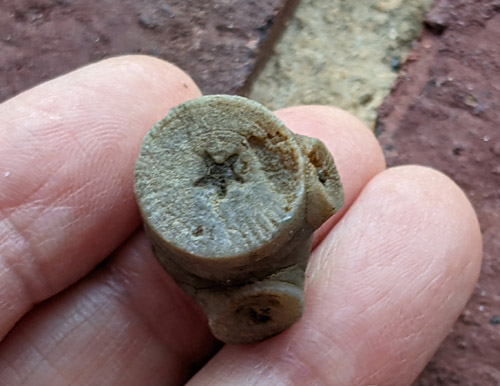
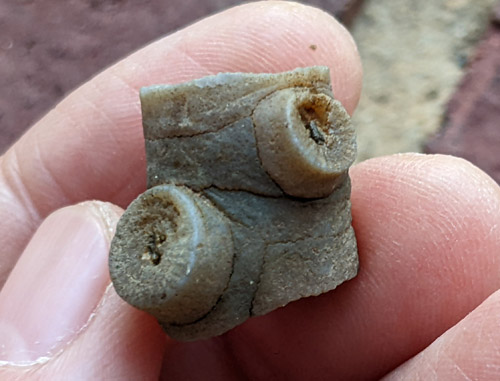
Another star-bellied crinoid stem that also has stubs of other stems
Photos by Lori Carter
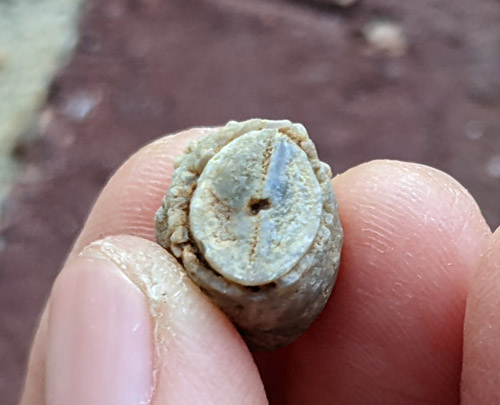
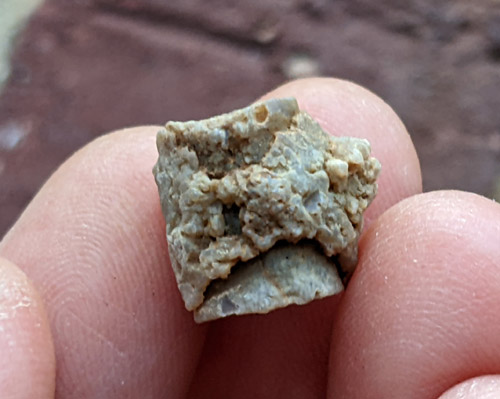
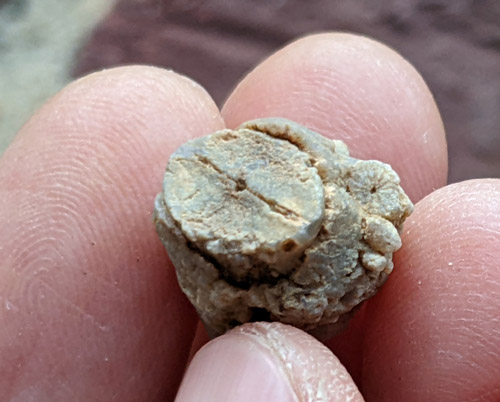
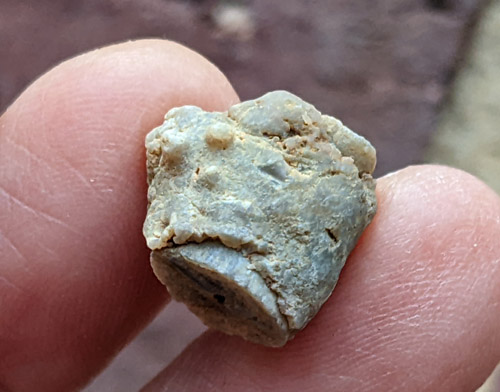
This stem appears to have a holdfast surrounding it
Photos by Lori Carter
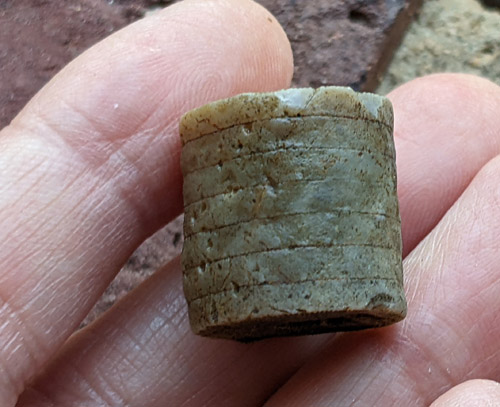
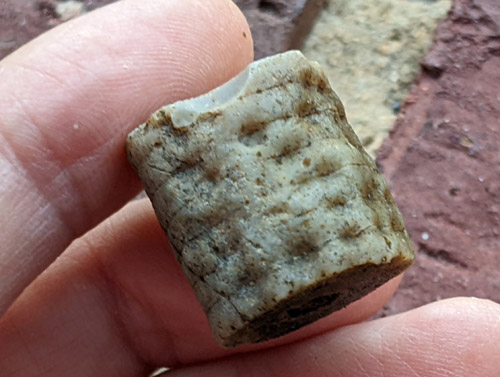
This stem is smooth on one side and oddly dimpled on the other
Photos by Lori Carter
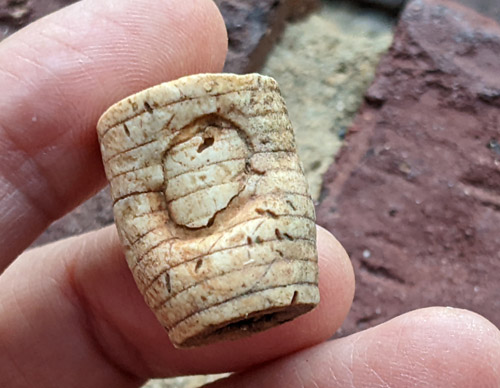
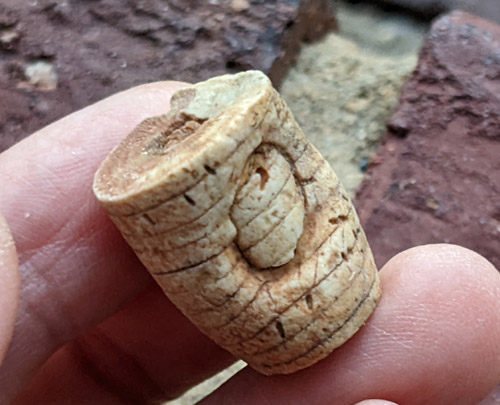
This stem may have been injured and healed, or a new stem was just beginning to form
Photos by Lori Carter
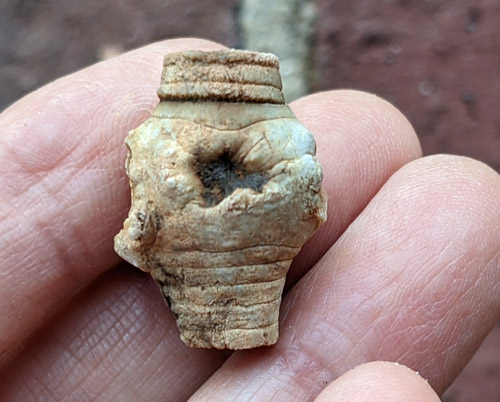
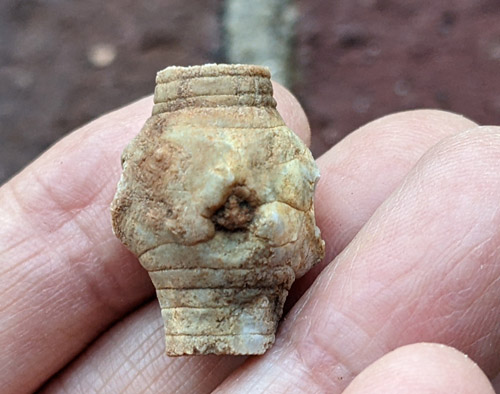
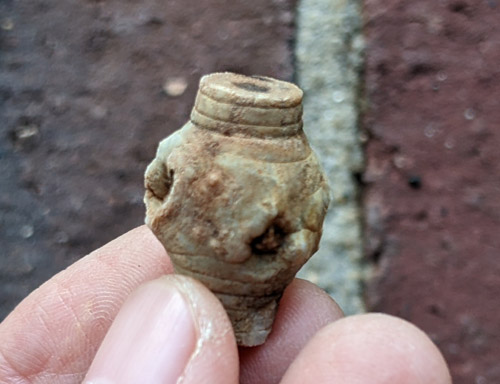
Another stem that may have been injured and healed
Photos by Lori Carter
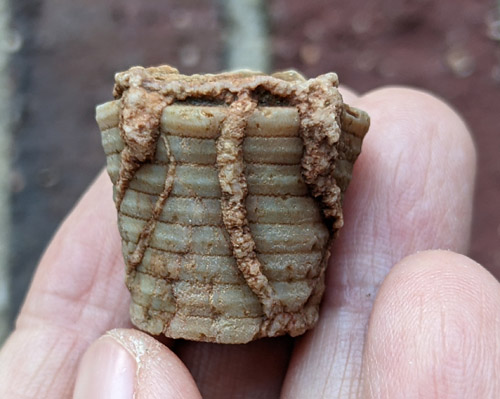
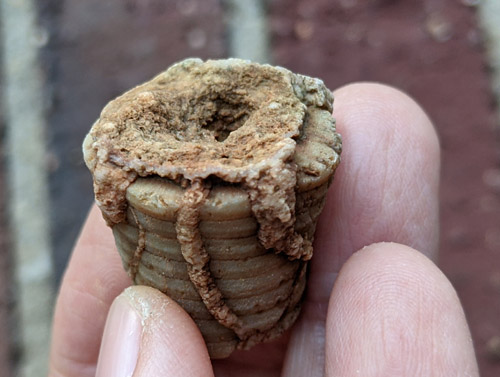
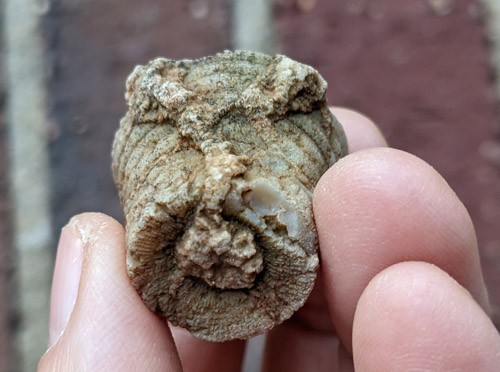
We often see this sort of "ooze", but we are not sure what it is.
Other Marine Fossils
Photo by Lori Carter
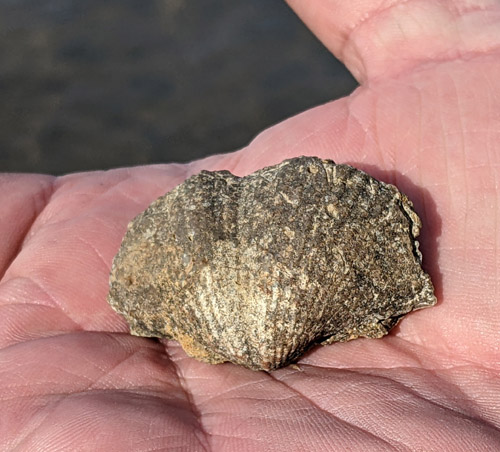
Nice little brachipod
Photo by Lori Carter
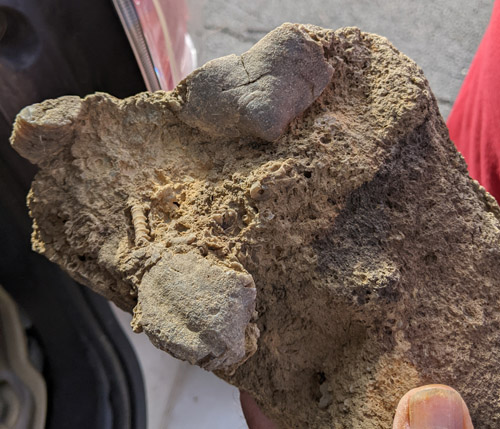
Piece with multiple brachipods
Photos by Lori Carter
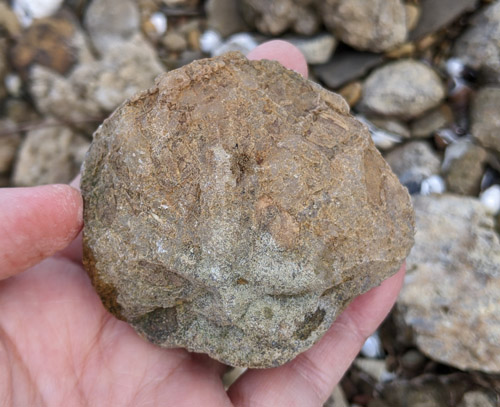
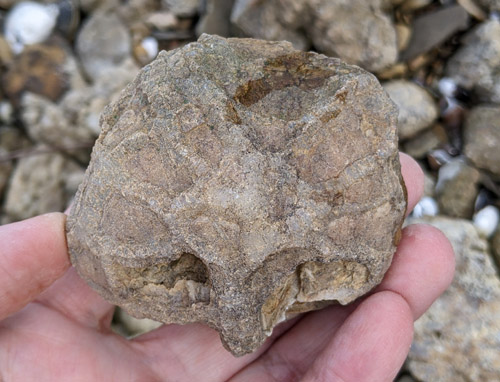
Large brachiopod
Photo by Lori Carter
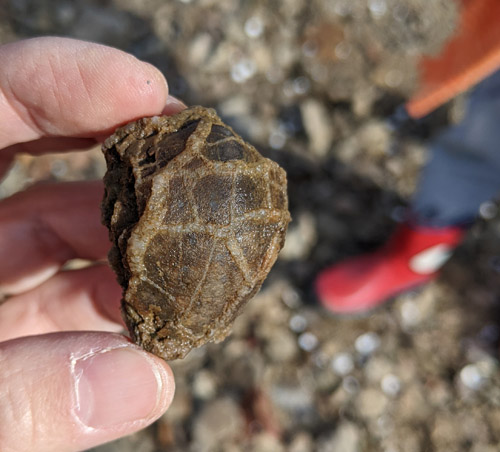
Horn coral?
Photos by Lori Carter
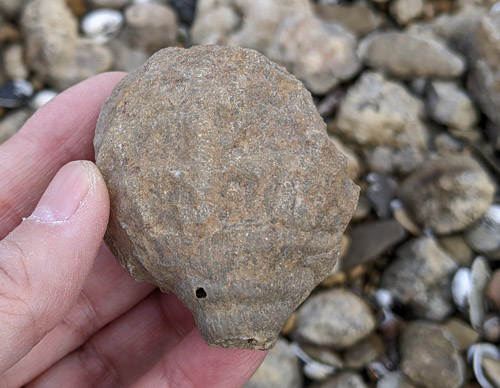
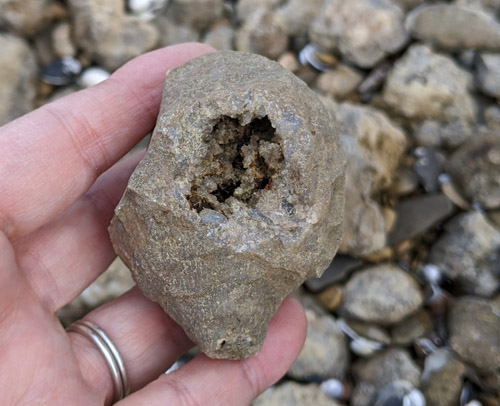
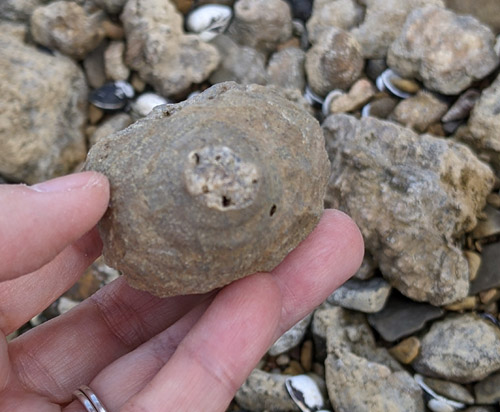
Large horn coral with crystals in it
Photos by Lori Carter
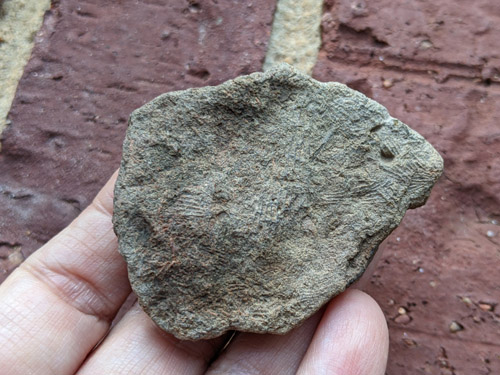
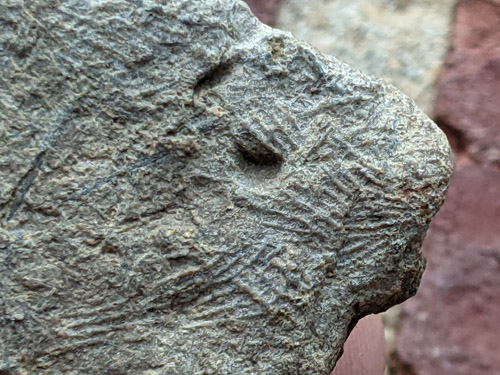
Bryozoans
Photo by Lori Carter
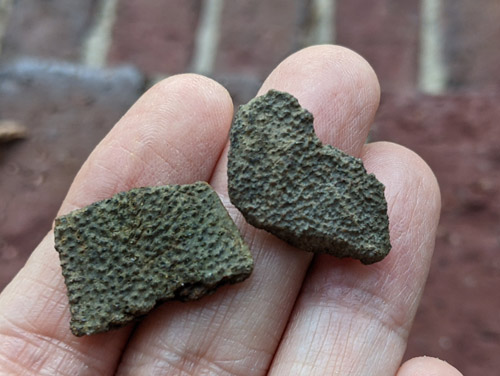
Not sure what these are, but we have seen this sort of thing before
Geodes!
Photos by Lori Carter
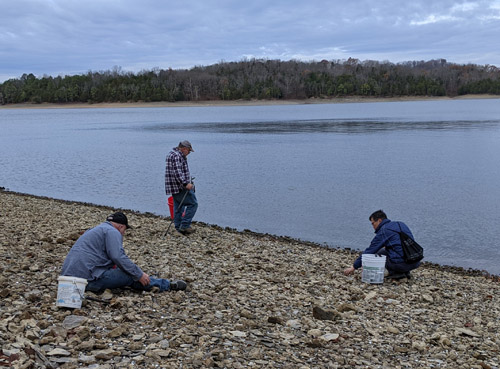
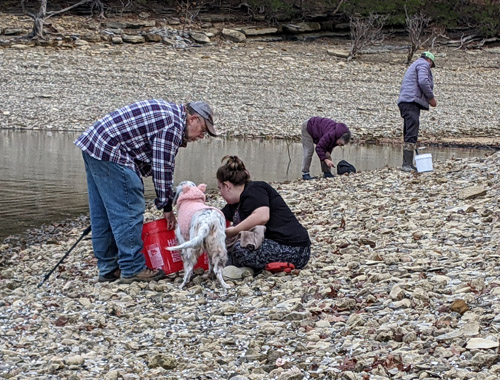
Beautiful day for collecting geodes!
Photos by Lori Carter
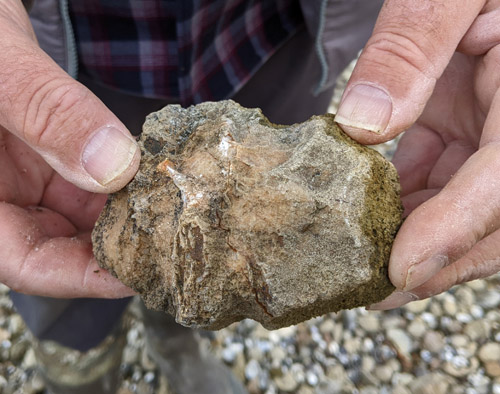
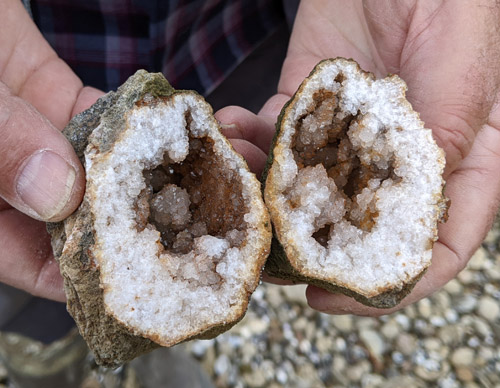
The reveal is always fun
Photo by Lori Carter
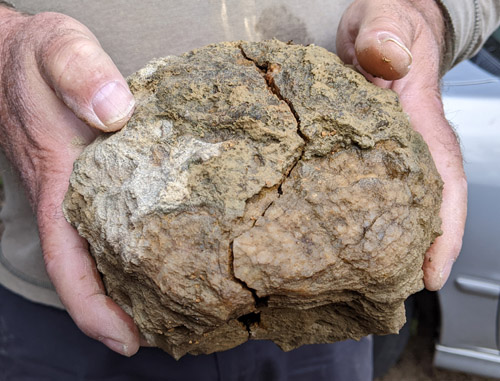
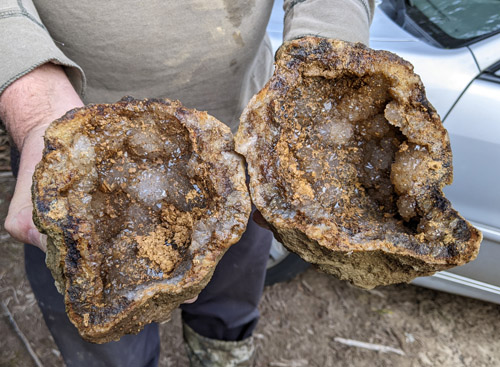
Big reveal!
Photo by Tim Hellinger
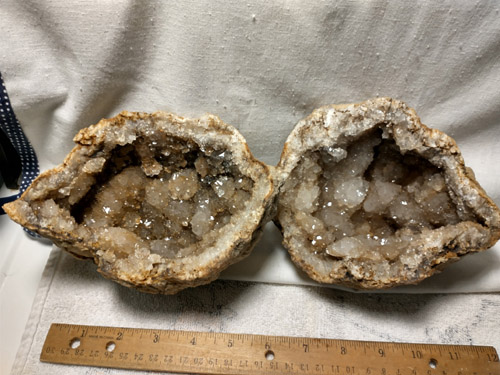
Big reveal geode after it was cleaned
Photos by Lori Carter
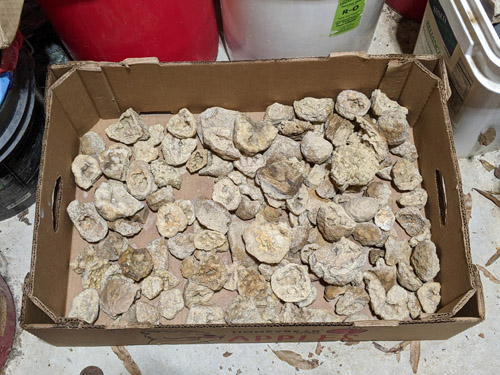
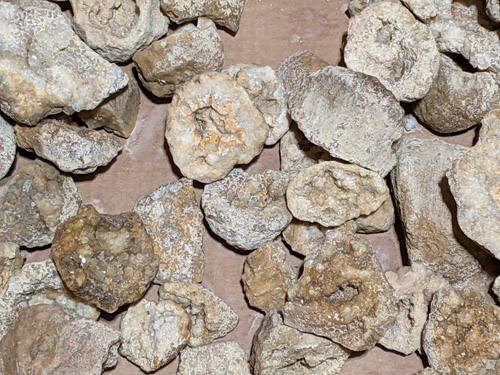
Baby geodes that have had one bath and will get another bath later
Photos by Lori Carter
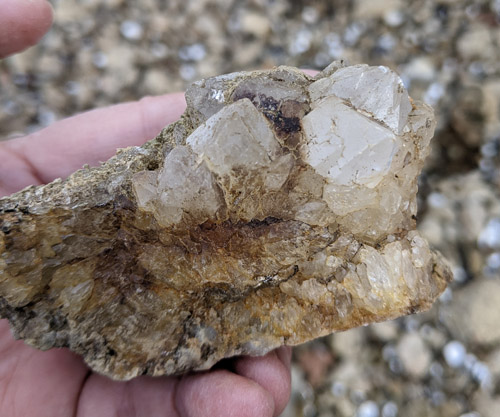
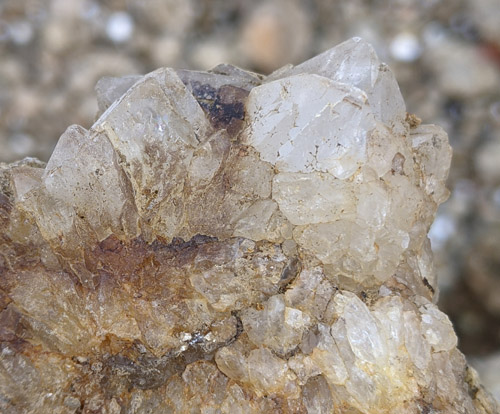
Some of the biggest quartz crystals we have seen at this location
Photo by Lori Carter
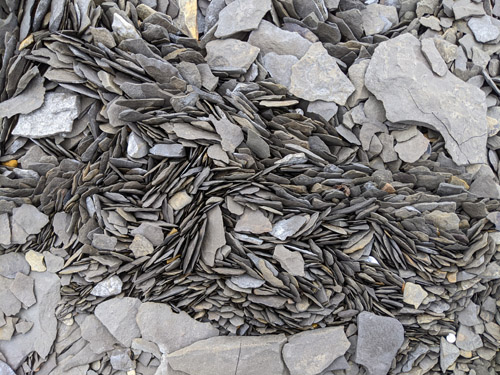
Water can arrange shale into some beautiful patterns
Photo by Lori Carter
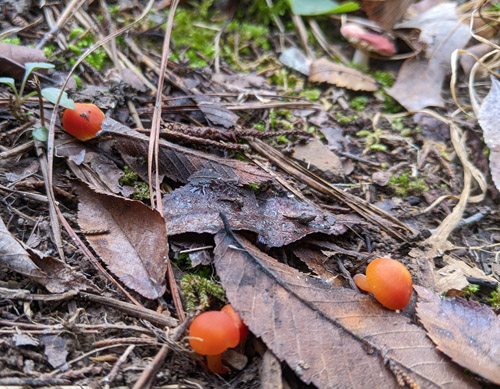
Tiny orange "fun guys" playing hide-and-seek in the leaves
Cook-out
Photo by Lori Carter
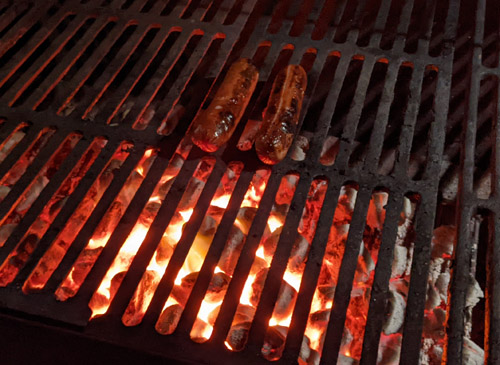
Hot diggity dogs!
Photos by Lori Carter
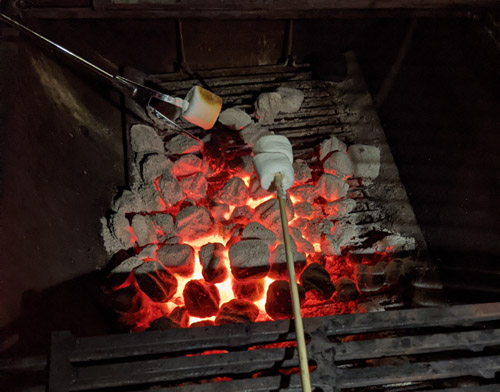
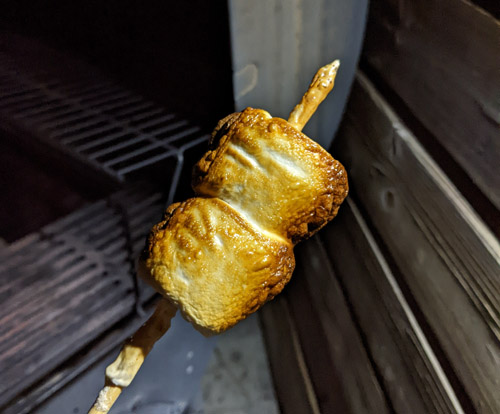
If you have glowing embers you have to toast marshmallows
Photos by Lori Carter
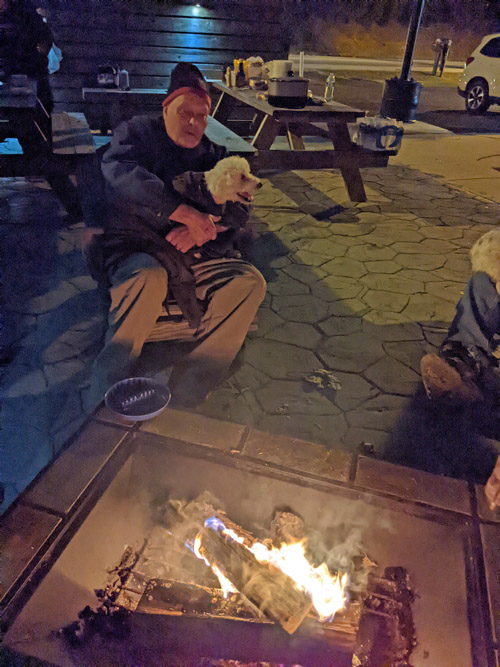

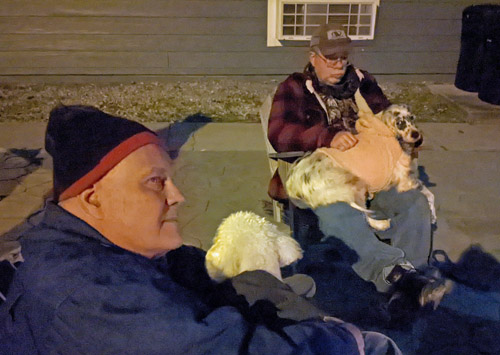
Just a couple of old dogs staying warm around the fire pit
Photos by Lori Carter
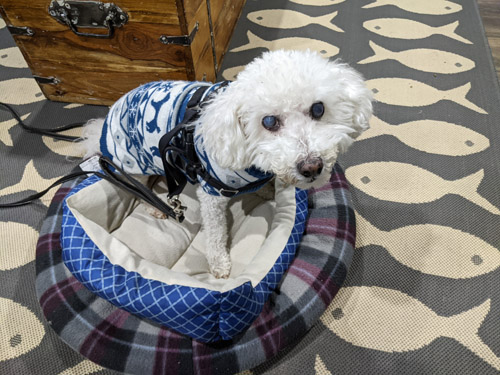
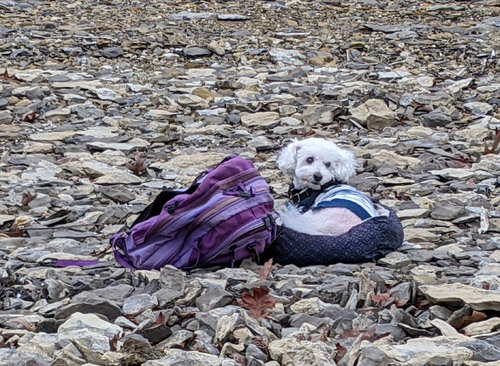
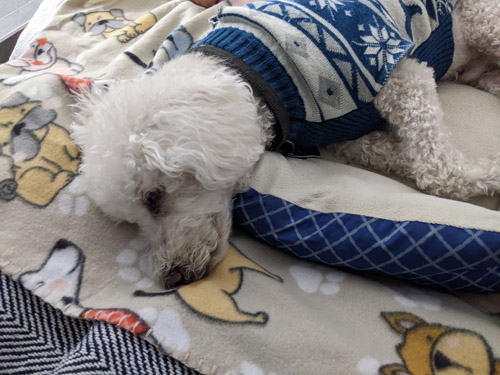
Gilligan at the beginning, middle, and end of the trip
Click below for field trip policies

Copyright © Georgia Mineral Society, Inc.
